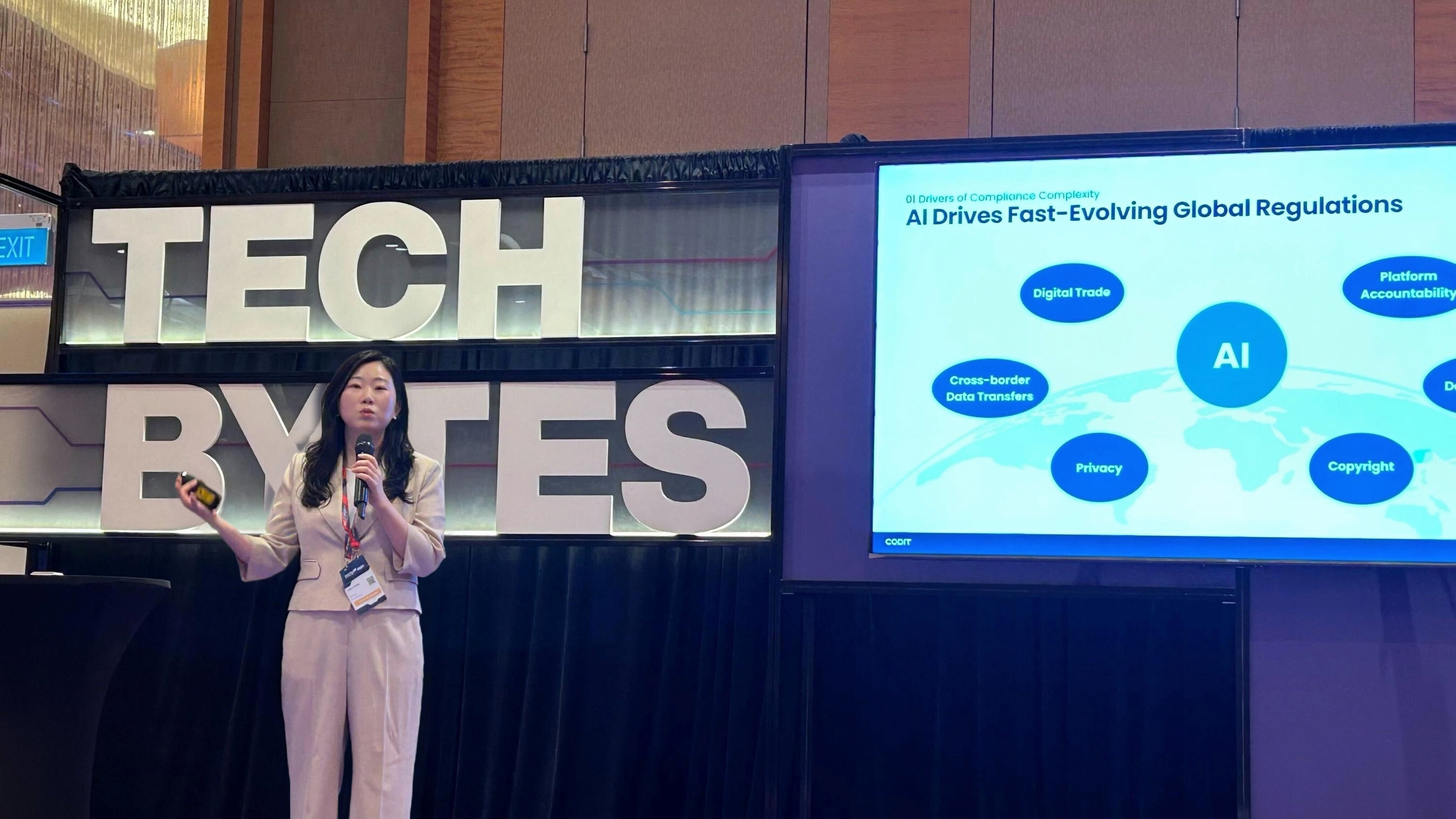The AI-Driven Transformation Across Sectors: From Hospital Admins to Space Constellations and Beyond
Author: Alexandra Chen, Senior Tech Correspondent

At the dawn of 2025, observers across business, science, and culture are watching a rapid reweaving of the digital world. Artificial intelligence isn’t a niche capability anymore; it’s becoming the operating system of modern commerce, healthcare, manufacturing, and governance. A wave of announcements this year underlines the breadth of this shift: a healthcare-focused AI startup closing a round to tackle a $450 billion administrative burden, the emergence of composable AI platforms that let firms assemble intelligent agents, and governance-oriented AI tools designed to monitor policy developments in real time. Taken together, these signals point to a broader trend: AI-enabled automation is moving from pilot projects to company-wide, industry-wide transformation — supported by capital, policy, and global networks that can scale these capabilities from a few pilots to widespread adoption.
The practical upshot is a redefinition of work and roles across sectors. In healthcare, the promise is straightforward and urgent: automated assistants that can triage scheduling, handle patient check-ins, manage prior authorizations with insurers, and support complex billing workflows. Prosper AI’s $5 million fundraising round, reported by Forbes, places this ambition on a clearer runway. The company argues that voice AI can operate inside institutional systems to reduce friction, cut administrative waste, and free clinicians to devote more attention to patient care rather than paperwork. The challenge ahead is less about proving the technology and more about seamless integration into hospital information systems, privacy safeguards, regulatory compliance, and the alignment of incentives across hospitals, billing firms, insurers, and patients.

Prosper AI’s approach targets the enormous administrative burden in U.S. healthcare by using voice AI to manage scheduling, billing, and insurer calls.
Beyond healthcare, the AI-enabled economy is being pulled by a broader mix of drivers: rising demand for real-time data insights, the emergence of platforms that enable rapid assembly of intelligent agents, and a global appetite for AI-enabled efficiency across supply chains, media, and financial services. A macroeconomic backdrop that many readers know well — inflationary pressures on education, housing, and healthcare costs — adds urgency to the efficiency narrative. A recent feature on the evolving cost of the American Dream notes that even as wealth narratives grow louder in the public discourse, the path to lasting wealth is increasingly tied to productivity gains, digital platforms, and scalable AI-enabled business models that can lower the marginal cost of service delivery. In this context, AI is less about a hype cycle and more about a practical toolkit for reconfiguring the cost structure of industries that underpin everyday life.
The investment environment around AI-enabled platforms is also warming in ways that matter for long-term sustainability. The closing of high-profile transactions around AI-driven platforms and data services — including media licensing and ecommerce optimization — is shaping a new norm in which growth narratives are tied to real-world efficiency gains. Pattern’s IPO close, for instance, was framed around the company’s ability to accelerate brands on global ecommerce marketplaces using proprietary technology and AI. That deal, alongside other licensing and content partnerships, signals investors’ continued interest in AI-enabled business models that combine data, automation, and scalable distribution. Taken together, these signals suggest that AI ecosystems are consolidating into durable business models rather than remaining solely as curiosity-driven experiments.
In the near term, a wave of geopolitical and market forces is pushing the AI story toward large-scale deployment. For example, China’s NTN and D2C market expansion is being fueled by a confluence of private investment, state-backed networks, and an ambitious policy framework that prioritizes space infrastructure as a strategic capability. ABI Research projects a substantial growth path for China’s space economy, with domestic private and public networks expected to deliver direct-to-cellular and direct-to-device connectivity in new ways. The forecast calls for a dramatic increase in satellites in orbit, rising from more than 17,000 in 2025 to well over 48,000 by 2032, driven in part by the Spacesail and Guowang mega-constellations and China’s broader Space Silk Road policy. These developments point to a future in which AI-enabled space services — from satellite data analytics to resilient global communications — become central to both national and commercial agendas.

ABI Research envisions rapid growth in China’s NTN frontier, powered by government-backed space policies and new mega-constellations.
Meanwhile, the media and licensing landscape is adapting to AI-enabled content workflows and data access. Veritone’s announcement of an ESPN audio licensing agreement for NCAA Championships illustrates how AI-driven media platforms are reshaping the way sports content is monetized and distributed. The deal showcases the potential for AI-powered archives and search tools to unlock value from vast audio catalogs, enabling new forms of fan engagement, analytics, and targeted advertising. In parallel, other AI-enabled business lines are attracting investor attention, as Pattern’s successful public listing demonstrates that AI-enabled ecommerce tooling and brand acceleration can scale to a global audience. The convergence of AI with media, sports, and entertainment is producing a new set of capitalization opportunities and risk-reward dynamics that market participants are actively pricing.
The broader financial technology narrative is also evolving. The crypto ecosystem continues to experiment with new models of value creation, including PayDax Protocol’s presale narrative that targets crypto lending as a path to liquidity and consumer adoption. The framing as a “best presale to buy now” reflects how crypto projects attempt to balance bold claims with the need for credible development, governance, and user trust. While crypto remains volatile, the attention it commands underscores a larger point: digital platforms that blend AI, data, and financial instruments are capable of reshaping not just how products are sold, but how capital is deployed, risk is managed, and communities form around new ecosystems.

PayDax Protocol presents a novel approach to crypto lending and liquidity, highlighted as a compelling presale narrative.
Amid these shifts, the technology stack supporting AI agents is maturing. Tray.ai is launching a composable platform designed to simplify rapid AI agent development. By enabling users to mix Smart Data Sources with AI tools in a plug-and-play fashion, Tray.ai aims to solve a classic decision-making puzzle: how to pick between rigid, pre-built solutions and costly bespoke systems. The concept of composability helps teams avoid vendor lock-in while accelerating experimentation, but it also raises questions about interoperability standards, security, and governance. As more companies begin to deploy AI agents across customer service, operations, and product development, the need for a flexible, auditable, and scalable framework becomes evident.

Tray.ai’s composable platform enables rapid AI agent development by mixing data sources and AI tools.
In tandem with composable agent platforms, governance-focused AI tools are moving from novelty to necessity. CODIT’s rollout of a next-generation AI policy agent, described as a regulator-style monitoring service, signals a new category of enterprise software: AI that helps multinational corporations keep pace with policy shifts, regulatory changes, and compliance requirements. Demonstrations at Asia’s flagship legal tech conference highlighted how AI can monitor policy developments in Korea and track National Assembly activity, offering a proactive approach to risk management. The advent of policy-oriented AI aligns with a broader demand for explainability, accountability, and control as AI systems become more deeply embedded in decision-making processes. In short, the market is now asking not just for smarter AI, but for AI that can reason about rules.

CODIT debuts a next-gen AI policy agent at Asia’s flagship legal tech conference, signaling a governance-forward direction for AI.
The creative and media economy is also riding the AI wave. From Boomy’s collaboration with Google Cloud to empower AI-generated music workflows to new models for real-time content production, the convergence of AI with audio, video, and cloud services is creating new avenues for creators and brands alike. Lyria 2’s integration with LoopMagic represents a compelling example of how AI can optimize artistic tools and workflows, enabling faster iteration and experimentation while offering new monetization paths for artists and developers. These experiments underscore a broader trend: AI is seeding a new wave of creativity that leans on scalable cloud platforms and sophisticated AI orchestration to transform how music and media are produced, licensed, and consumed.
In aggregate, the landscape sketched above points to a future where AI is embedded in the fabric of business models, not merely as a technology choice. The convergence of automated administration in healthcare, high-growth space infrastructure, AI-powered media, and composable AI agent platforms creates a networked ecosystem in which data, tools, and governance interact. For executives, policymakers, investors, and technologists, the implication is clear: success will hinge on building adaptable architectures, trustworthy governance, and partnerships that span industries, geographies, and regulatory regimes. The AI-driven transformation of 2025 is not a single product launch or a single deal; it is a multi-threaded movement toward more efficient operations, smarter decision-making, and incentivized innovation across the global economy.

Pattern Group IPO closing: AI-enabled ecommerce platforms attract investor interest.
As a final reflection, the trajectory of AI in 2025 is marked less by a single breakthrough and more by the steady accumulation of capabilities that begin to reshape everyday work and long-term strategy. From automated hospital administration and licensable media archives to-scale satellite networks and policy-aware AI agents, the era is defined by the ability to combine data, automation, and governance into coherent systems that create value while managing risk. The path forward will require not just technical skill, but disciplined governance, resilient platforms, and a shared sense of purpose among researchers, business leaders, and regulators. Only with such alignment can the AI-enabled future realize its promise: to do more with less, to connect people and services more reliably, and to expand opportunities across industries and geographies.

Veritone signs ESPN licensing deal to expand access to NCAA Championships content.
If there is a lesson from these developments, it is that AI’s value lies not only in sophistication but in the ability to scale practical capabilities across organizations. Whether it’s a hospital system trimming administrative drag, a media company unlocking new revenue from archives, or a satellite constellation delivering resilient global connectivity, the AI-enabled future depends on deploying reliable platforms that can be governed, audited, and extended as needs evolve. As 2025 unfolds, leaders must choose how to mobilize AI as a strategic asset — and how to do so in a way that balances efficiency with privacy, security, and human judgment.